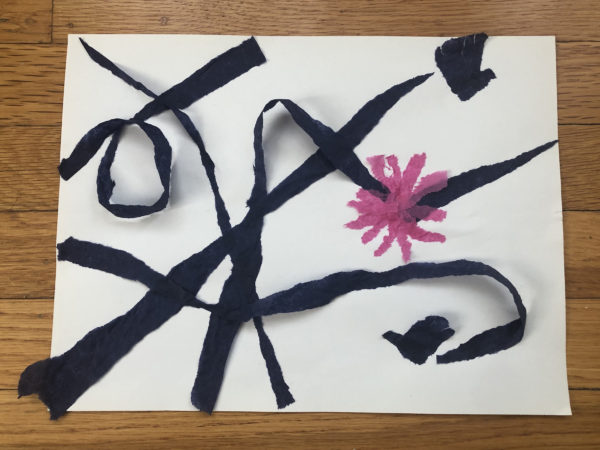Activity
Flying Carp Kite
Objective: Children will make a paper carp kite.

Overview:
VPA/VA pre-k.2.2: Demonstrate beginning skill in the use of materials (such as pencils, paints, crayons, clay) to create works of art.
VPA/VA k.1.1: Recognize and describe simple patterns found in the environment and works of art.
VPA/VA k.2.2: Demonstrate beginning skill in the use of tools and processes, such as the use of scissors, glue, and paper in creating a three-dimensional construction.
VPA/VA k.2.7: Create a three-dimensional form, such as a real or imaginary animal.
VPA/VA 2. 3.3 Identify and discuss how art is used in events and celebrations in various cultures, past and present, including the use in their own lives.
Materials:
Head and Tail Fish Pattern and Visual Instructions (see Downloads above); Lightweight white paper—shelf paper works very well; Crayons; Watercolor paints and brushes; Glue and scissors; Iron (for teacher use); String
Introduction:
May 5th, which used to be Boy’s Day in Japan, is now celebrated as Children’s Day. Many of the old customs are continued. One of these is the appearance of the carp, flown from tall poles outside of the homes of boys. The carp, made of cloth or paper, are sometimes as long as 30 feet. They are attached to tall poles along with gaily-colored streamers. Because carp are a very strong and spirited fish, parents put up these banners in the hope that the children in their family will be strong and healthy like the carp.
In this activity, children will make a paper carp which may be flown at their own homes on May 5th. Skills reinforced through this activity include: greater understanding of traditions, aesthetic awareness, symbolism, fine motor skills, visual discrimination and awareness, measurement and following directions.
Procedure:
- Fold a piece of paper. Place the head pattern between the folds of the paper. Make sure the top of the fin is placed next to the fold. Using a dark crayon, trace the design on both sides of the carp.
- Draw in the scales of the carp.
- Cut out the carp except for the top fin.
- Open the paper and paint the carp.
- After the painting has dried, turn the carp over and glue along the outside of the paper. Do not apply glue to the mouth. Glue small strips of paper to the inside of the mouth to add reinforcement.
- Refold the carp and seal the edges. After it has dried, add string at the mouth to create a kite.
- Match the section to the tail portion of the pattern.




